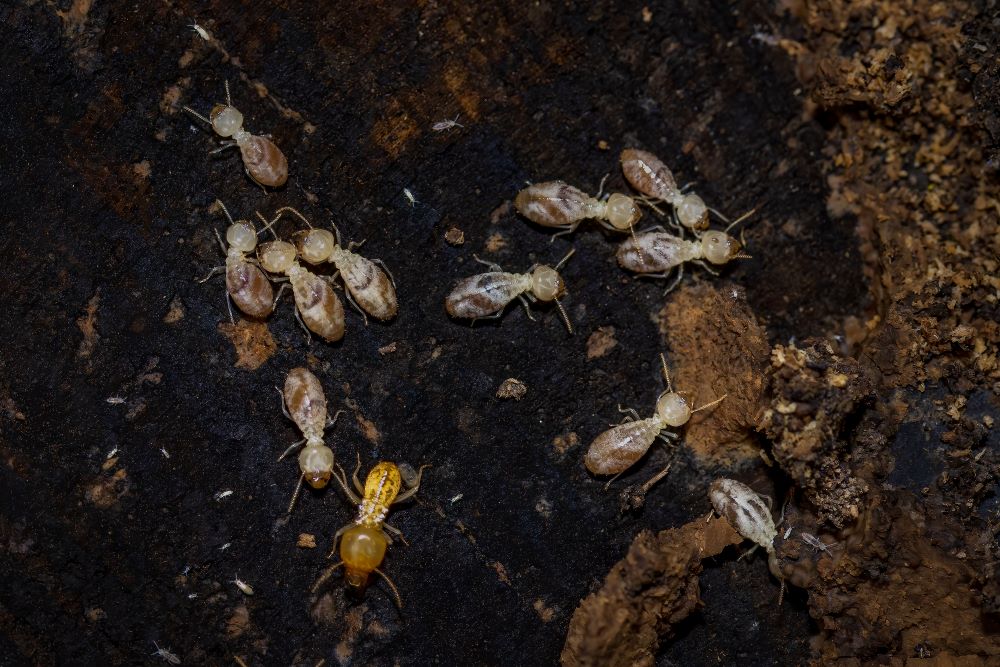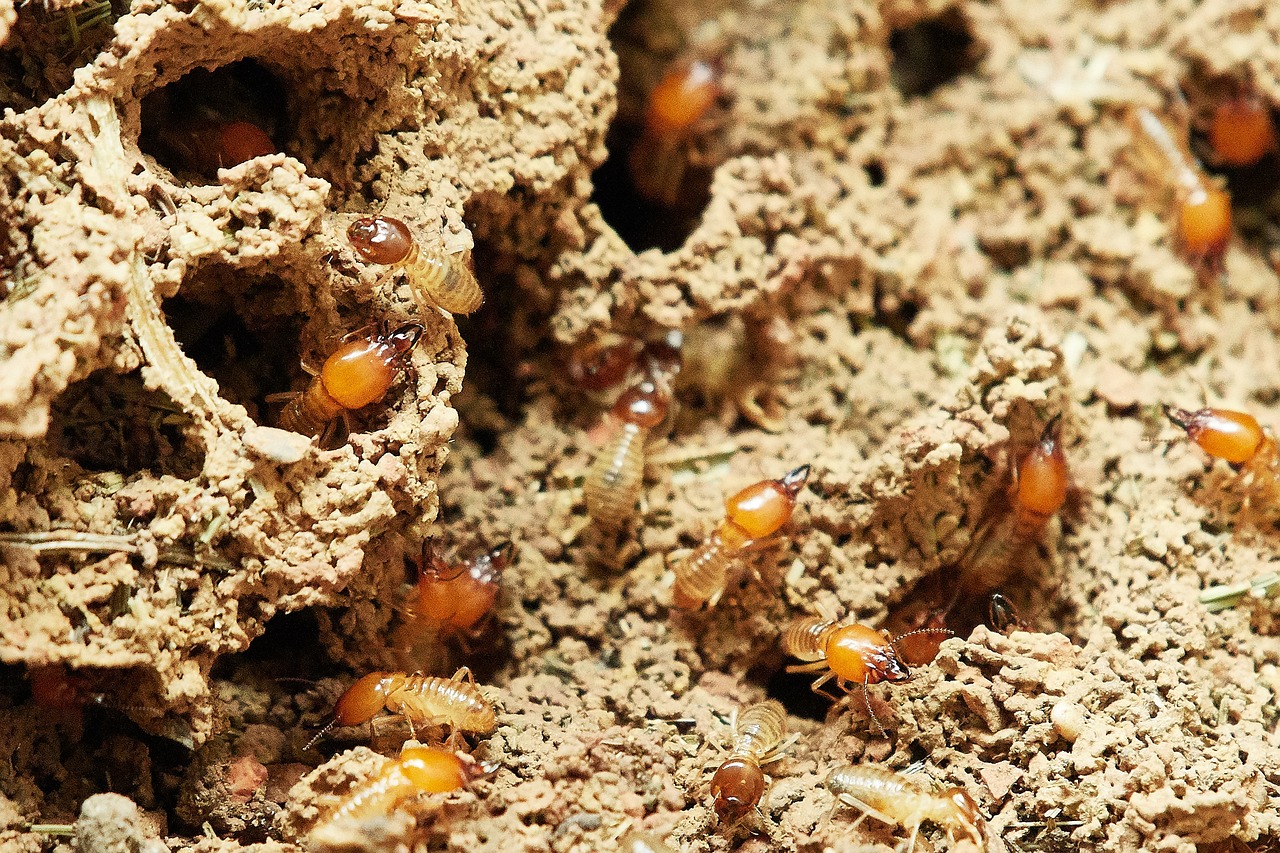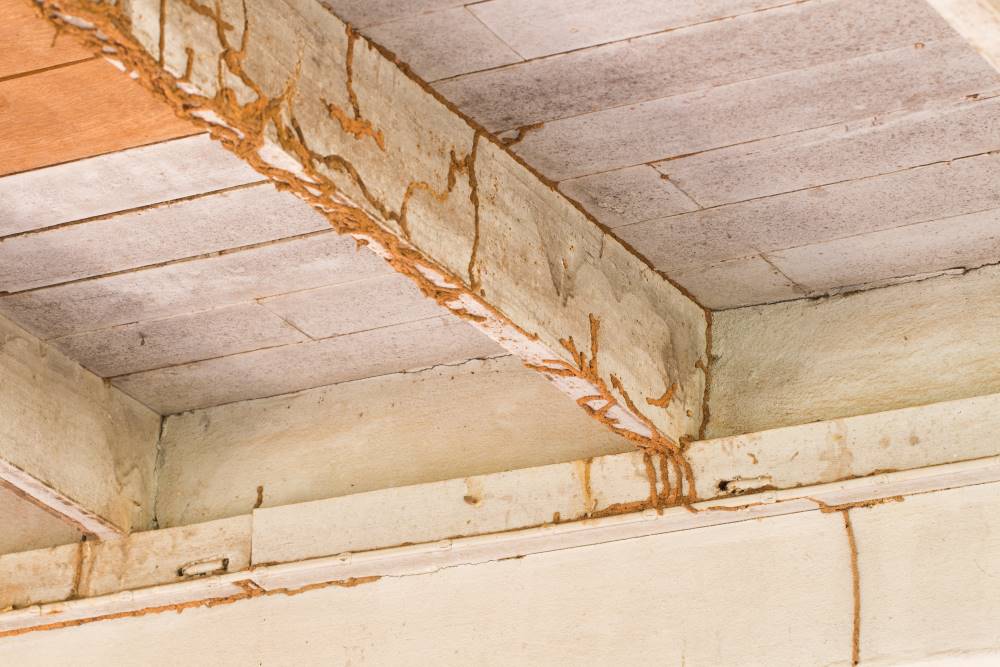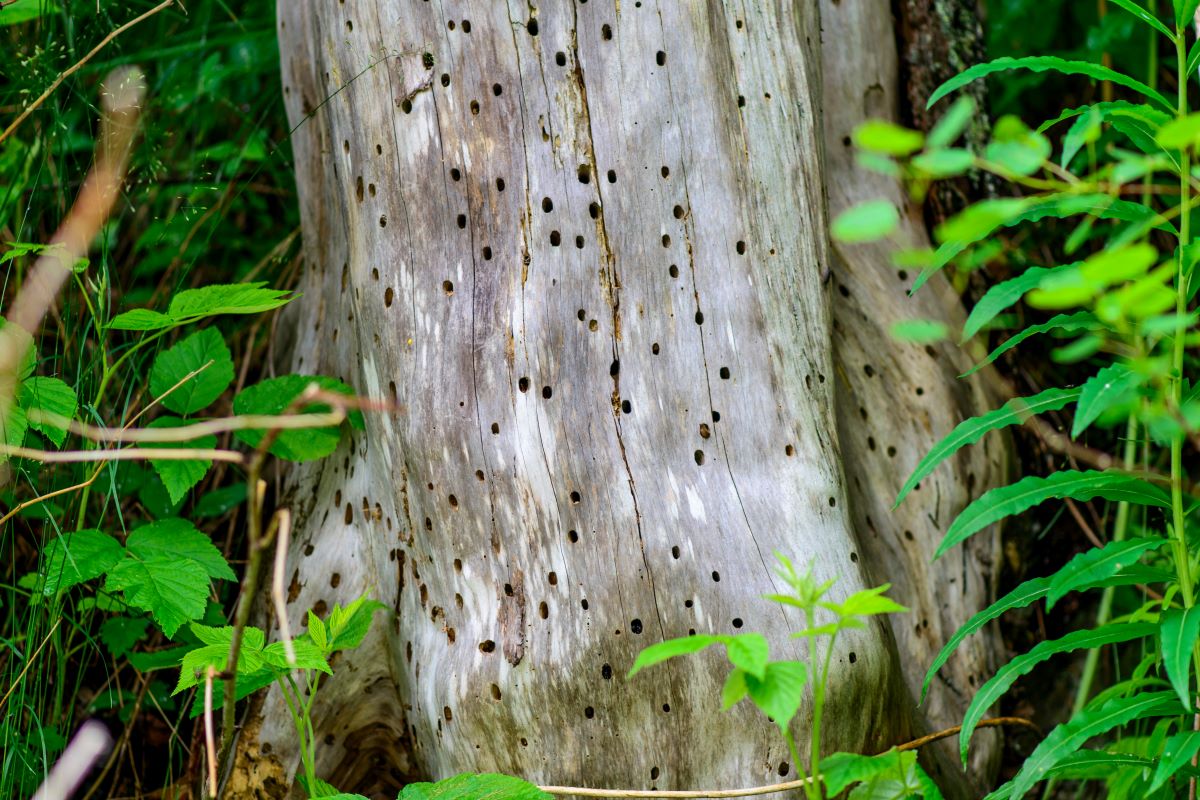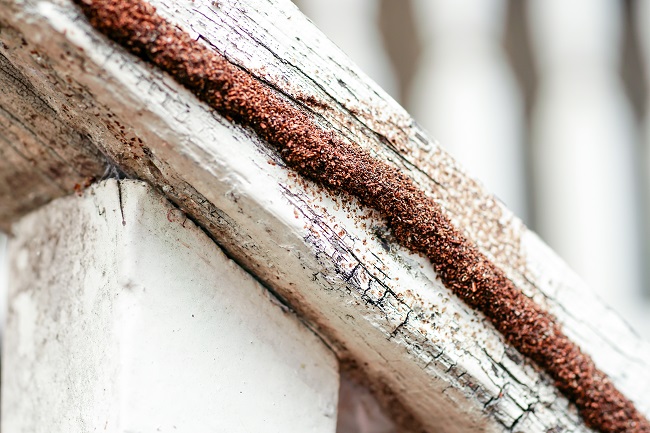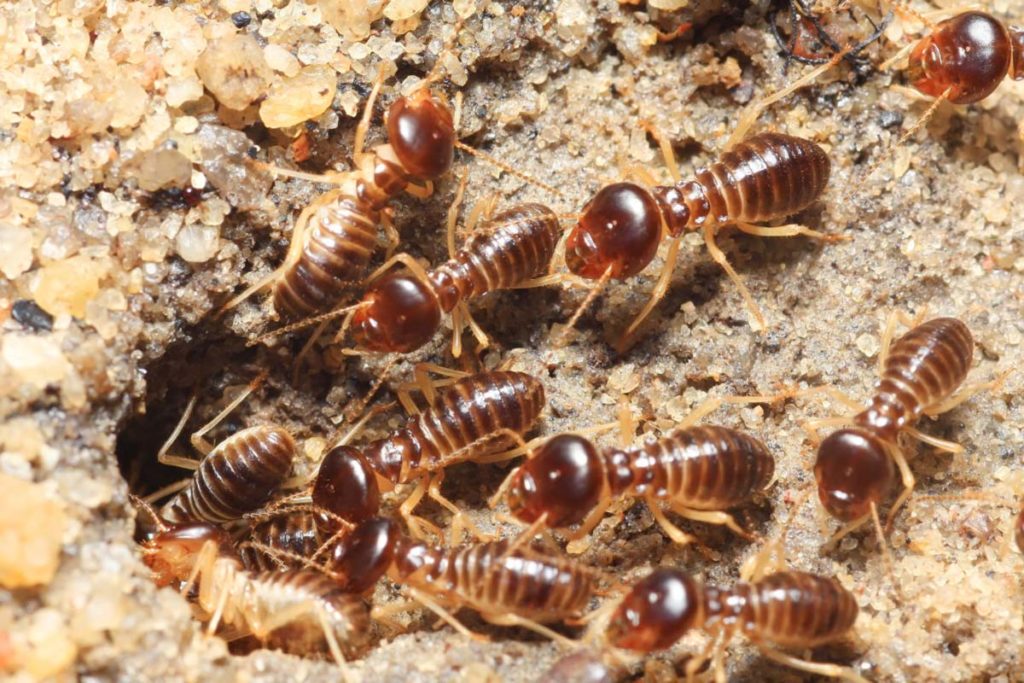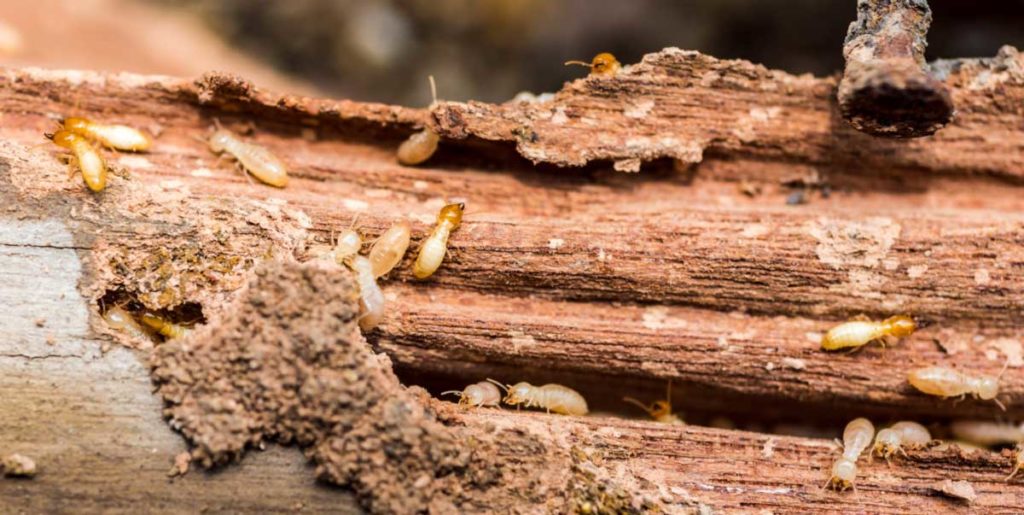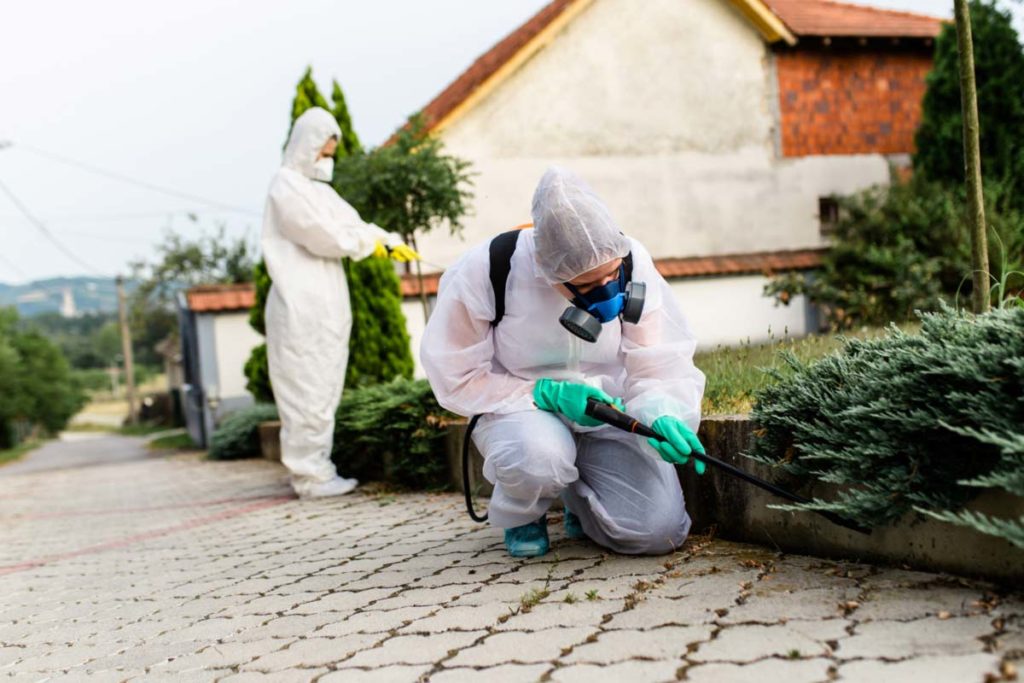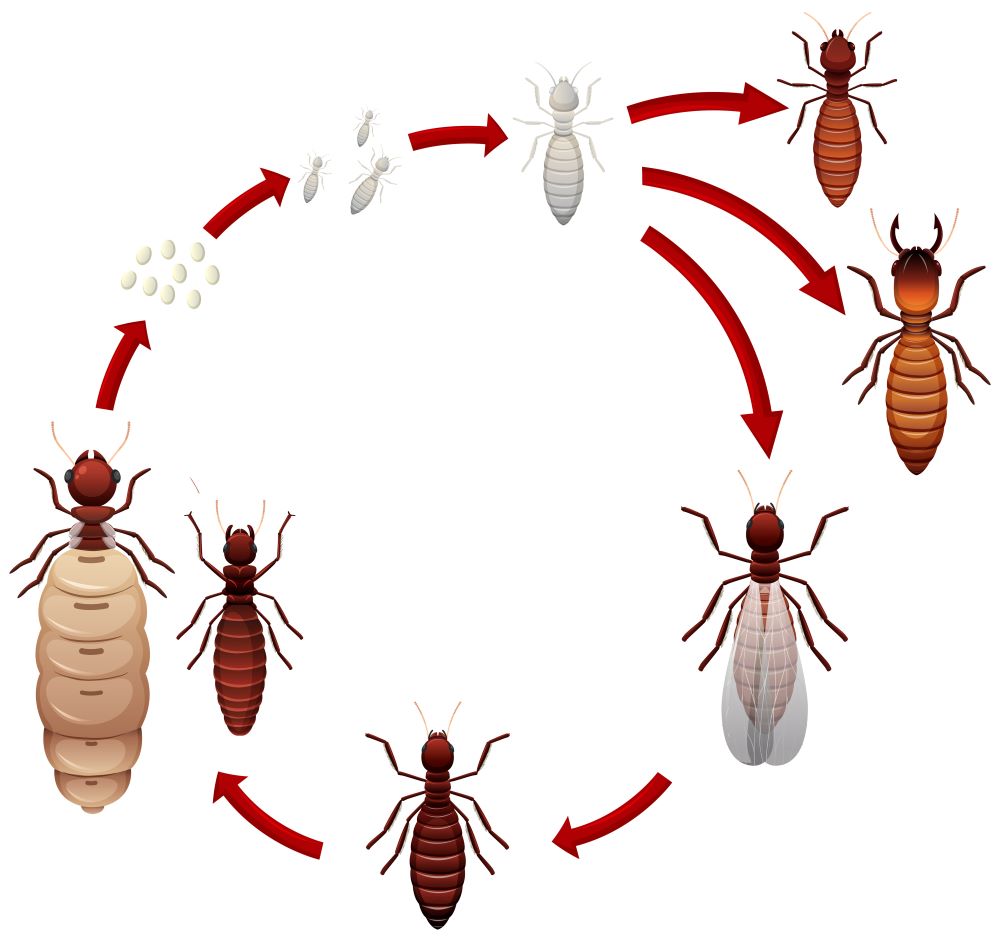
Chances are, unless you’re in the pest control industry, you’ve never given much thought to the life cycle of a termite. However, understanding this process can provide valuable insights for managing and preventing termite infestations. In this comprehensive guide, we’ll dive into each stage of the termite life cycle, exploring the unique roles of worker, soldier, and reproductive termites in their complex social structure.
1. Reproduction: The Start of the Termite Life Cycle
The termite life cycle begins with a fascinating event known as a mating flight. During this process, alates, or winged reproductive termites, depart from their established colonies to procreate. After mating, these termites land, shed their wings, and initiate new colonies, assuming the roles of king and queen termites. They are the core of the termite life cycle and oversee reproduction.
2. Laying of Eggs
Following successful mating, the queen termite commences her primary duty: laying eggs. The quantity of eggs a queen termite can produce varies significantly, ranging from a few hundred to several thousand per day. These eggs are carefully tended to by worker termites to ensure their survival.
3. The Emergence of Nymphs
After a period, the eggs hatch into termite larvae, which are often referred to as nymphs. At this stage, the nymphs are essentially young termites undergoing a series of molts, a process that involves shedding their hard outer exoskeleton to allow their new, more flexible one to expand and harden. This molting process continues throughout the termite’s life, dictated by the colony’s needs.
4. The Development of Larvae
Over a series of molts, the larvae grow and eventually take on a role within one of the three termite colony castes: workers, soldiers, or alates. The caste to which a larva is assigned isn’t random but rather is determined by factors such as the colony’s needs and the larva’s maturity.
5. Understanding the Termite Castes
Each termite caste has distinct physical characteristics and responsibilities. Worker termites, which make up the majority of the colony, are responsible for constructing tunnels and chambers, as well as feeding and grooming other termites. Soldier termites, on the other hand, play a defensive role, protecting the colony from potential threats. Lastly, alates are the reproductive termites that leave the colony to start new ones.
6. Swarming: A Key Stage in the Termite Life Cycle
Swarming, a stage in which fully mature termites capable of reproduction develop wings and functioning eyes, is a critical component of the termite life cycle. The bodies of these termites, known as alates, harden and darken to withstand exposure to light and less humid air. After a successful mating flight, the swarmers shed their wings, indicating the establishment of a new colony.
7. The Lifespan of Termites
The lifespan of a termite depends on its caste and the conditions of its environment. Worker and soldier termites typically live approximately one to two years. Queen termites, however, have a significantly longer lifespan and can live for over a decade under optimal climate conditions.
8. Encounters with Homeowners
Homeowners most commonly encounter worker termites, which are responsible for tunneling through wood, and alates, which are visible during swarming events. The presence of termite damage or remnants of a swarm, such as dead termite bodies or shed wings, may indicate a termite infestation.
9. Concerns for Homeowners
The primary concern for homeowners regarding termite infestations is the potential for significant structural damage. Worker termites are responsible for this damage as they consume cellulose found in wooden structures. Therefore, early detection and intervention are critical to mitigating the impact of a termite infestation.
Enlisting the help of professional pest management services, such as Recon Pest Services, can provide homeowners with an effective strategy for termite removal.
10. More Information on the Termite Life Cycle
For more information on the termite life cycle or to schedule a free termite inspection, don’t hesitate to contact us at Recon Pest Services. Our team of experienced professionals is equipped to handle all your termite-related concerns, providing top-notch termite removal services in Omaha.
Understanding the termite life cycle is a crucial step in managing and preventing termite infestations. By understanding the roles of different termites within their social structure, homeowners can better identify signs of an infestation and take appropriate action. Remember, early detection is key in mitigating the damage caused by these wood-hungry insects.

